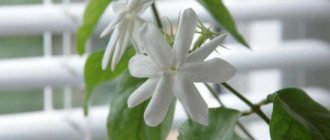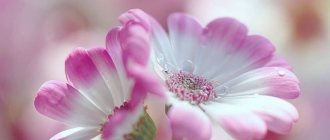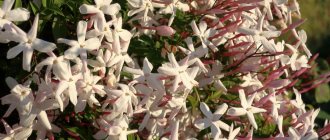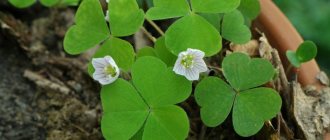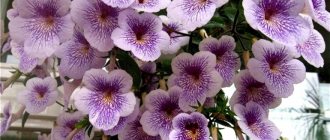Brovallia care
To extend the flowering period, you need to create the most comfortable conditions for the flower. The most important thing is to adjust the climate, humidity and choose a good place in the apartment.
Lighting
Brovallia loves bright and diffused light. In order for a flower to bloom, it must be provided with 12 hours of daylight throughout the year. If there is not enough sun in winter, additional lighting must be installed.
Attention! In winter, the plant is placed on the south side in order to somehow compensate for the lack of light.
Temperature
Comfortable temperature for the plant in the warm season is +20-25°C. In winter, the temperature is maintained at +15-17°C. If you do not maintain a period of rest, the flower will hurt. Also, lowering the temperature is necessary for future flowering and high decorativeness.
Attention! The air temperature is also lowered to prevent the shoots from stretching. If the climate remains the same as in summer, but the plant does not have enough sun, Browallia will begin to stretch.
Place in the apartment
When installing a plant, you must choose an area without drafts and temperature changes. The plant should be kept away from heating appliances. It is best to place the pot on a window with a southeast or southwest orientation. This way the brovallia will get enough light and won’t burn the leaves.
Watering and humidity
Watering frequency:
- The plant loves abundant watering. The watering standard for brovallia is once every 7 days.
- During the warm season, irrigation may be required every 2-3 days.
- In winter, the intensity of watering is reduced to 1 time per week.
It is important to let the top layer of soil dry out between waterings, otherwise fungal infections may develop and the root system will begin to rot.
Browallia thrives at moderate humidity levels of around 55-60%. On hot days, the above-ground part of the plant is additionally sprayed. Otherwise, spider mites may appear in a dry room. At the same time, it is important not to touch the inflorescences; the petals darken when water gets on them.
Important! Watering and spraying is always carried out with settled water at room temperature.
Feeding
Fertilizers are used only during the active growing season - from spring to early autumn. In winter, fertilizing is not needed.
Supplements can be made every 2 weeks. It is desirable that they include phosphorus and potassium compounds. High concentrations of nitrogen are undesirable. You can use complex mineral supplements.
Pinching and trimming
Pinching is carried out occasionally during the active growing season. The procedure gives the plant lushness and compactness. Young apical shoots and the first buds are pinched, this provokes abundant branching.
Attention! To ensure a longer flowering period, you need to pick off old buds immediately after they bloom. Otherwise, they will begin to form a seed pod, and the energy of the brovallia will be spent on fruit ovary.
Pruning is also carried out in early spring, old, darkened and diseased branches and leaves are removed.
Conditions for Brovallia (table)
| Season | Lighting | Humidity | Temperature |
| Spring | Bright, but diffuse. A small amount of direct sun will be beneficial for the flower. Western and eastern directions are suitable for placing brovallia. On the south side on sunny days it is necessary to shade the plant. In the north there may not be enough light for growth and flowering. | Slightly increased, 60–70%.
| Moderate, around 18–20. Browallia does not like sudden changes in temperature; do not place the plant near an open window. |
| Summer | Brovallia can spend the summer on the balcony or in the garden. Protect the flower from wind and hot sun. Too intense light can cause foliage burns. | Moderate, up to 25 degrees. Protect from heat. Fresh air enhances flowering. If the temperature rises significantly, the plant may wilt. | |
| Autumn | Lighting: Bright light with a few hours of direct sun. When daylight hours are shortened, provide artificial lighting with phytolamps. Otherwise, browallia will not bloom. | Moderate or increased. The warmer the room, the higher the humidity should be. Do not place the plant near heating devices. Spray if necessary. | Moderate, about +18–20 degrees. Gradually lower the temperature. |
| Winter | Cool, optimally +16–18 degrees. Coolness is useful for setting buds. At higher temperatures and lack of light, shoots may stretch and weaken. |
Landing instructions
Brovallia should be planted in soil made from turf and leaf soil, preferably adding perlite and humus. The pot must allow for the drainage of excess liquid.
Suitable pot for planting Brovallia
Soil and drainage
The composition of the soil can be different, the main thing is that it is nutritious, loose, and neutral in acidity. The easiest option is to purchase universal soil for home flowers and add sand and charcoal to it. They also use soil for Saintpaulias.
You can make your own soil from:
- 2 parts of turf land;
- 2 parts leaf soil;
- 1 part humus;
- 1 part perlite.
Choosing a pot
The pot should have drainage holes from which excess liquid will come out. Otherwise, the plant will develop root rot.
Plastic pots are most often chosen, but clay pots are also suitable. There should be a space of 1.5-2 cm between the walls and the earthen lump. You can use hanging containers, because The stems are quite long and can hang down to the sides.
Transfer schedule
The plant dies after it forms seed pods. You can artificially extend the lifespan by replanting after flowering begins. The procedure is carried out once a year, in early spring.
Replanting is also necessary when the plant has outgrown its pot. If the time for replanting has come, and changing the pot is not required, you can simply replace the top layer of soil with a fresh one.
Step-by-step planting instructions
Transplantation is carried out either before flowering or after. Otherwise, browallia will lose its inflorescences.
Before the transplant procedure, you need to water the flower well:
- A drainage layer is laid on the bottom of the pot, which usually occupies 1/5-1/6 of its height.
- The prepared earthen mixture is laid on top.
- The flower is carefully removed from the old pot and the soil is shaken off the roots. Dried and darkened areas are cut off.
- The plant is centered in the pot and the remaining substrate is added. Then you can shake the container slightly or compact the soil a little to get rid of voids.
- The plant is shed abundantly with water.
Main types
Brovallia belongs to the Solanaceae family, but, unlike its relatives such as potatoes and tomatoes, it is not used in cooking.
The plant is native to South America.
There are five main varieties in the Brovallia genus:
- Beautiful;
- American (hairy);
- Sticky;
- Blue Bell;
- Silver Bell.
Browallia is a very beautiful flower
Brovallia is beautiful
The height of Browallia, beautiful in the wild, can reach one and a half meters. On the windowsills of apartment buildings, the plant usually grows up to 35 cm. The shrub branches well, does not require pruning to form a beautiful silhouette and blooms very profusely. The flowers have a purple or blue tint.
Browallia americana
This indoor annual plant contains small flowers that are predominantly purple, sometimes blue. The leaves are dark green, very expressive in color. Flowering continues from mid-summer until late autumn.
Brovallia sticky
Artificially grown Brovallia sticky is not the most common variety. It received the epithet “sticky” in its name for its stems covered with sticky liquid. The flowers of the plant are small, dark blue or white.
Browallia Blue Bell
Brovalia Blue Bell is characterized by low maintenance. Due to this, the variety is more often grown in apartment conditions than others. The bush has a spherical shape and grows to an average height of 30-35 cm. Already three months after sowing in the soil, the variety begins to bloom with flowers painted in different shades of blue. The variety is hybrid.
Brovallia Silver Bell
Another popular hybrid variety, Browallia Silver Bell, has flowers shaped like a five-pointed star. Their size is 3 cm in diameter, the petals are white. The leaves of the Browallia Silver Bell flower have a rich dark green color. On average they grow up to six cm.
Brovallia Silver Bell looks very festive
This variety is often grown as an annual in flower beds and in flowerpots outside.
Reproduction
Brovallia propagates in two ways - by seeds or cuttings. Cuttings save time and give better results.
Seeds
- The collected seeds are left in lukewarm water for 24 hours.
- Soil, which consists of sand and peat, is placed in the planting container.
- The ground is sprayed with a spray bottle.
- Seeds are planted in a container with a depth of 2 cm.
- The seeds must be covered with glass or film to create a greenhouse effect. At the same time, they are ventilated daily and regularly moistened.
- When the first shoots appear, the plants are placed in a well-lit place and the film is removed.
By cuttings
- Healthy, already formed apical cuttings are cut from the bush, always with 2-3 leaves.
- The cuttings are placed in water until the root system is formed, the process usually takes about a month.
- Water is replaced once every 3 days.
- When the roots have grown 2 cm, they can be planted in the ground.
Important! Up to 3 cuttings are planted in a pot to make the plant more lush and beautiful.
Short description
Browallia is an indoor flower that belongs to the Solanaceae family and is a distant relative of potatoes and tomatoes. In its natural environment, the shrub grows up to one and a half meters. However, when grown in a pot, its height rarely exceeds 50 centimeters.
Blooming lilac petals of brovallia.
The shoots of the bush are covered with wide green leaves. At the end of spring, star-shaped flower buds form on them. The color range of Browallia petals is quite varied. Most often they are painted in the following colors:
- lilac;
- violet;
- blue;
- white;
- Navy blue.
Life expectancy is 2-3 years. Therefore, many flower growers, immediately after the end of flowering, replace old shrubs with younger brovallias, which will bloom next year.
Additional Information! At home, such a plant must be grown very carefully, as it is poisonous.
Pests
Unfortunately, pests love the succulent leaves of Browallia. If maintenance standards have been violated, or the plant has been transplanted into contaminated soil, insects quickly form entire colonies.
Shchitovka
The insect reaches about 2 mm in length. Has a durable shell. The pest digs into the pulp of the leaves, tightly adhering to the plate. That is why it is difficult to get rid of scale insects using traditional methods.
You can try rinsing the plant in the shower, brushing off the scale insects with a soft brush, but this method does not prevent re-infestation. The most reliable method is insecticide treatment. Before spraying, the window sill and pot are wiped with disinfectant compounds.
Shchitovka
Then spray :
- Aktaroy;
- Mospiran;
- Bankolom.
Spider mite
The tick is difficult to detect due to its small size; the body reaches 1-2 mm in length. The insect reproduces quickly, the colony hides on the inside of the leaves. Because of the pest, a thin cobweb forms on the brovallia, the foliage becomes dry and lethargic, and the plates begin to turn yellow.
The sick plant is taken to a separate room for quarantine.
Spider mite
Then the processing :
- Actellicom;
- Fitoverm;
- Neoronom.
The pest appears only at low air humidity. Accordingly, with regular watering, spraying and an average level of humidity, there will be no spider mites.
Whitefly
Outwardly it resembles a small white butterfly, the length of the body is 1.3-1.5 mm. When a flower is infected by a colony of pests, when approaching it, a whole cloud of fluttering insects forms around the brovallia. The leaf blade begins to curl inward. The color saturation is lost, the leaves become pale. A sticky coating appears on the surface of the plant. The development of the plant stops.
Important! It will not be possible to get rid of the larvae using folk methods, because... they are protected by a wax cocoon. The best way to cure a flower is to use insecticides.
To cure brovallia, spray:
- Aktaroy;
- Confidor;
- Spark.
If there is a whitefly in the room, other flowers may become infected. It is better to isolate the sick flower in a separate room.
Garden and indoor plant varieties
There are six most common varieties of brovallia that are ideal for growing at home.
Beautiful
Beautiful Brovallia is most often found in the central part of America and in southern countries, where the air temperature does not fall below 15 degrees Celsius. In European countries, this variety is grown as a houseplant.
To maintain it, it is necessary to create optimal conditions close to natural ones. Only in this case will the beautiful brovallia bloom on time.
Externally, the bush resembles an ordinary petunia. It grows up to 50-60 centimeters in height and does not need tying up. At the end of spring, flowers form on it, the petals of which turn purple. The leaves of the plant are large, 6-7 centimeters in length. Their surface is painted dark greenish.
Large-flowered
Many gardeners prefer to grow a large-flowered variety for decorative purposes. This is an annual plant that looks like a medium-sized branched bush. The height of the plant reaches 50 centimeters. However, if grown properly at home, it can grow up to 70-80 centimeters.
Large-flowered Brovallia bush
In the large-flowered brovallia, all the flowers are collected in loose inflorescences. During flowering, the flower petals are bluish or white.
For reference! Flowering for this variety begins in the second half of November and lasts for three months.
Hairy
A medium-sized plant that grows up to sixty centimeters in height. The bush is distinguished by branching and abundant flowering.
Brovallia pubescent has large flowers that turn purple during the flowering period. The variety blooms in October or November, flowering continues for 4-5 months.
Sticky
This is a low-growing variety that is suitable for growing in apartments and open ground. The spherical bushes of sticky brovallia grow up to 35 centimeters in height.
Many small buds are formed on the shoots of the plant, which bloom in bluish, white, blue and purple colors.
Additional Information! The main feature of the variety is its slightly sticky stems. It is because of this that the flower got its name.
"Blue Bell"
Blooming bud of the Blue Bell variety
To decorate the interior of a private house or apartment, you can use Blue Bell flowers. This is a low-growing plant, the height of which does not exceed 30 centimeters. The foliage is dark green.
Blue Bell blooms in November and fades in early January.
"Silver Bell"
This is a hybrid plant that is ideal for indoor growing.
Browallia "Silver Bell" has bright green leaves that are durable and rich in color. The flowers are small, no more than three centimeters in diameter. The petals are painted white, with a slight grayish tint.
The genus Brovalia includes 6 species of this plant. There are certain differences between them. Each species undoubtedly deserves attention.
Brovallia is beautiful
The most popular type for use in indoor floriculture. The bush has a size of 35-40 cm. All year round it is covered with small flowers of blue or light blue shades with a white color at the base.
Quite a large plant - the height can reach half a meter. The flowers also differ in size and can be white or light blue in color. The highlight of the species is not only the size of the flowers, but also the fact that they are collected in inflorescences.
Browallia pubescent
A medium-sized bush, no more than 60 cm, pleases with flowers of blue and purple shades all year round. The flower got its name for its increased pubescence compared to other species.
Brovallia sticky
This species can be grown both at home and in the garden. The plant is quite compact, about 30 cm in height. The inflorescences are small, blue or white with a snow-white center. It was called sticky because of its fleecy and sticky stem.
Browallia Blue Bell
Quite new, but already a favorite look for everyone. The plant has a spherical shape and blooms very impressively. Small flowers, painted in different shades of blue, abundantly cover the ends of the shoots.
Hybrid form with unusual colors. In addition to their snow-white color, they have an interesting shape. During the flowering period, the plant is covered with small white stars.
Brovallia Silver White
Application
This indoor and garden plant is most often used as a tapeworm. It is great if you need to create a single accent in a room - for example, decorating a kitchen table with a potted plant. It can combine well with other plants that have similar needs, but the use of brovallia in compositions is not very common.
In open ground, brovallia is used in flower beds, as a border plant and, of course, in a variety of containers. Browallia looks unconventional, so she can become a good participant in modernist compositions. Planting in hanging containers is possible; brovallia has sufficiently flexible shoots so that it can act as an hanging crop.

